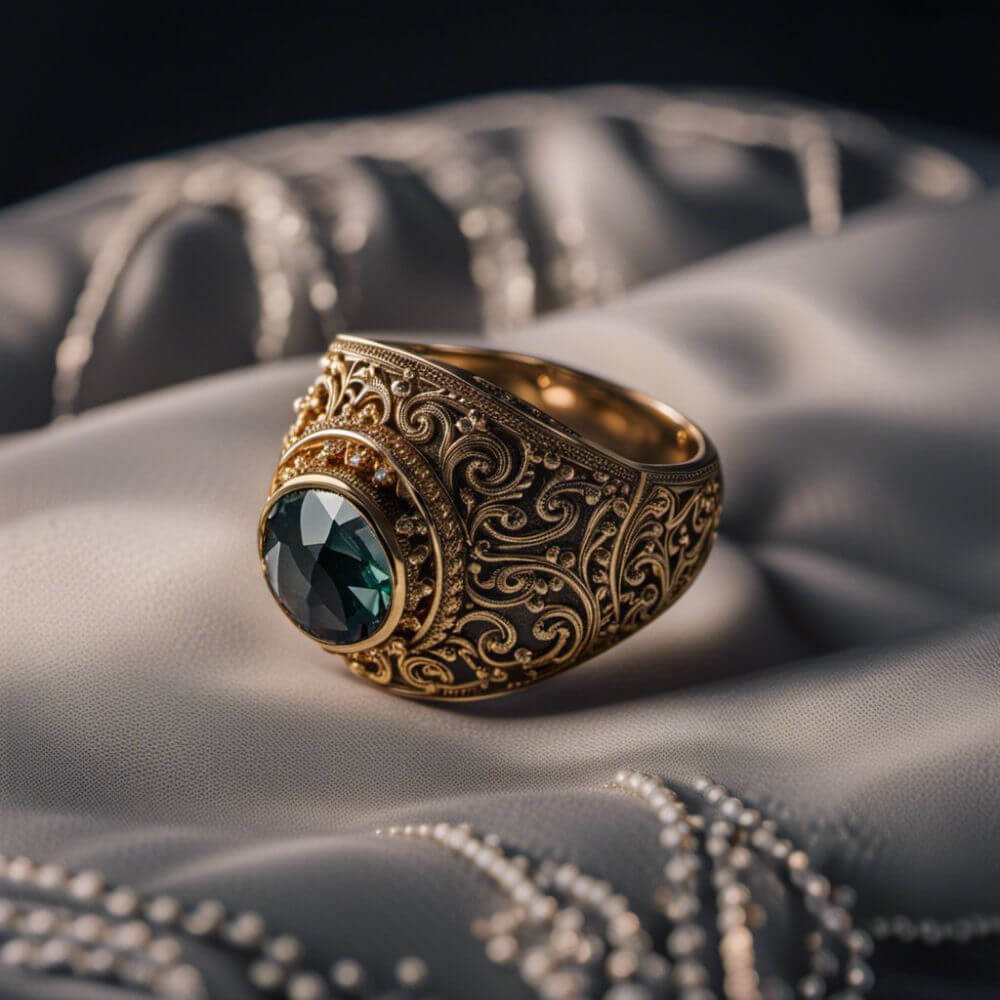Ancient Roman Rings
In the ancient world, a quick way to assess the relative success of a state and the comfort of its people is by determining the degree to which that society produces art and manufactured goods. By this metric, the ancient Romans had the most advanced culture the world had ever seen up to that point, with the potential exception of ancient China.
One of the many ways this can be seen is in the finely crafted jewelry that Rome’s artisans were able to create, and the sophisticated social messages that could be conveyed by wearing different types of jewelry.
While both male and female Romans wore many different types of jewelry, one of the most prevalent accessories were rings.

Rome's Distinct Style of Jewelry
Ancient Rome borrowed much of its culture from the ancient Greeks, but they had very different tastes when it came to jewelry. While Greek culture prized jewelry that demonstrated skilled metalwork and was relatively plain, Romans preferred brightly colored ostentatious jewelry with precious gemstones and vibrant glass beads.
Where previous cultures would have had to smith each piece of jewelry by hand, by the time of the Romans, technology had advanced to the point that they could make molds and mass-produce jewelry in large numbers.
This significantly lowered the average cost of jewelry, which made it more accessible to more members of society. This was especially true in the case of rings due to their simple form and short list of required materials.
The result of mass-producing rings was that they were everywhere in Roman society. Not only were they worn by both men and women, but most Roman men wore many rings, with five on each hand being a common sight. Women generally wore fewer rings than men because they wore many other pieces of jewelry like bracelets, brooches, earrings, and necklaces.
Regardless of who wore them, rings would often have a large, colorful adornment in the form of a gemstone or colored glass bead. Some ancient sources claim that Roman glass makers were so skilled that some of their beads could easily be mistaken for genuine gemstones. The gemstones that were commonly used in making Roman rings were emerald, pearl, lapis lazuli, and amethyst.
Rings & Social Standing
The use of finger rings in ancient Rome was highly entwined with its highly stratified social classes.
For example, only men of high social standing were permitted to wear rings made of gold or silver. Some men who were Senators or otherwise situated in the highest social classes would have gaudy rings with very large gemstones that would immediately inform others of their station.
Conversely, men who were plebeians or commoners were only allowed to wear rings that were forged of iron.
However, some men of low social standing were granted special permission to wear a single gold ring for showing bravery or prowess in battle, whilst soldiers of the Roman legions wore small legionary rings.
In the case of Roman women, rings and jewelry had a special cultural significance. Unlike many other societies of the time, women in Rome maintained their own money and property even after they were married.
Jewelry was an important part of this monetary independence because women were free to buy, sell, and wear it as they saw fit. Through her collection of jewelry, a Roman woman could communicate her own personal success in business ventures apart from her husband.
Finally, the ancient Romans had their own equivalent of the modern wedding rings. As in Egypt and Greece before it, it was established tradition in Rome for a man to give his betrothed a ring of iron, which had significant monetary value in ancient times and was seen as proof of the man’s true intention to follow through with the marriage engagement.
At the time of the wedding, the man would receive a similar ring and each would wear them as a sign of commitment to the other, just like today. They even used the same finger on the left hand.
As time went on and Rome became more and more wealthy, wedding rings became more elaborate with gemstones and engravings. Some of these iron rings were even intentionally magnetized to symbolize the attractive force between the new married partners.



